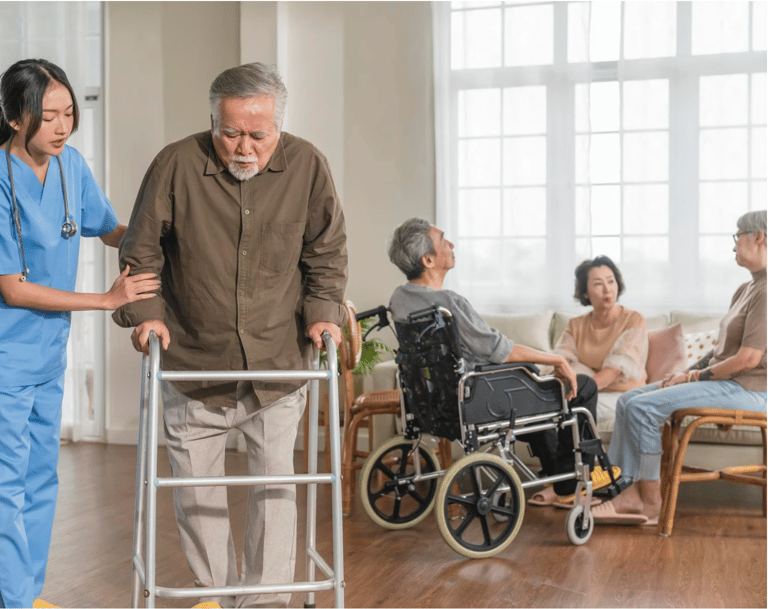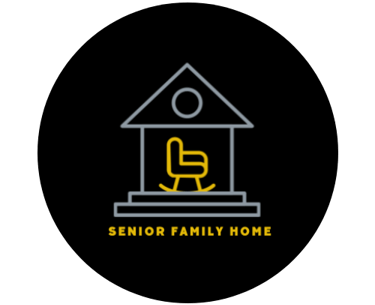Aging in Place vs. Senior Communities: Exploring the Pros and Cons


As we age, one important decision that many seniors face is whether to age in place or consider moving to a senior community. Both options have their advantages and challenges, and it's essential to weigh the pros and cons to make an informed choice. In this blog post, we'll delve into the topic of aging in place versus senior communities, exploring the benefits and drawbacks of each approach. Whether you're a senior contemplating your future or a family member assisting a loved one, this comprehensive guide will help you navigate this important decision.
1: Aging in Place
Aging in place refers to the concept of seniors remaining in their own homes or familiar living environments as they age, rather than moving to a senior living community or facility. It emphasizes the desire for independence, autonomy, and the ability to maintain a sense of familiarity and comfort in one's own surroundings. Aging in place recognizes the importance of preserving individuals' connections to their community, friends, and neighbors, while also promoting the adaptation of the living space to accommodate changing needs and accessing necessary support services to ensure a safe and fulfilling lifestyle.
1.1 Pros of Aging in Place:
Familiarity and comfort of home
Seniors have spent years building memories in their homes, and remaining in a familiar environment can contribute to a sense of security and well-being. Being surrounded by personal belongings, cherished mementos, and a familiar layout can promote a sense of continuity and reduce the stress associated with relocation. Additionally, staying at home allows seniors to maintain their established routines and enjoy the independence and autonomy that comes with it.
Independence and autonomy
By staying in their own homes, they can continue making decisions about their daily routines, lifestyle choices, and personal preferences. This freedom empowers them to live life on their terms, engaging in activities they enjoy and preserving a sense of control over their lives. Aging in place allows seniors to retain their individuality and make choices that align with their unique needs and desires, promoting a greater sense of self-worth and fulfillment.
Emotional attachment and sentimental value
One of the significant pros of aging in place is the emotional attachment and sentimental value associated with one's home. Over the years, homes become repositories of cherished memories and milestones, holding deep sentimental value. Aging in place allows seniors to remain in a space that is filled with personal mementos, photographs, and familiar belongings, fostering a sense of comfort and emotional well-being. Being surrounded by these reminders of a well-lived life can bring immense joy and provide a strong sense of identity and connection to one's past.
Maintenance of established routines and familiarity with the neighborhood
Seniors often have established routines that provide structure and a sense of stability in their daily lives. By staying in their own homes, they can continue following these routines, which can be essential for their physical and mental well-being. Aging in place also allows seniors to stay connected to their neighborhood, maintaining relationships with neighbors, friends, and local businesses. The familiarity of the surroundings and the community can contribute to a sense of belonging and provide a support system during times of need.
Cost-effectiveness in certain situations
Aging in place can be cost-effective in certain situations. For seniors who own their homes outright or have low mortgage payments, remaining in their own homes can be more financially advantageous compared to the expenses associated with moving to a senior community. Additionally, aging in place eliminates or reduces costs such as monthly rent, community fees, or entrance fees typically associated with senior living options. With careful planning and access to home modification programs or aging-in-place services, seniors can make cost-effective adjustments to their homes to accommodate their changing needs and age comfortably in a familiar and affordable environment.
1.2 Cons of Aging in Place:
Potential social isolation and limited social interactions
One of the cons of aging in place is the risk of social isolation and limited social interactions. Seniors who choose to remain at home may face challenges in maintaining an active social life, especially if their social circle diminishes over time. The lack of regular social interactions can lead to feelings of loneliness, which may have negative impacts on mental and emotional well-being. It is important for seniors aging in place to actively seek out social opportunities and stay connected with family, friends, and community groups to mitigate the effects of social isolation.
Safety concerns and the need for home modifications
As seniors age, their homes may not be adequately equipped to meet their changing mobility and safety needs. Stairs, slippery floors, and inadequate bathroom fixtures can pose risks for falls and accidents. Home modifications, such as installing grab bars, ramps, and improved lighting, may be necessary to create a safer living environment. However, these modifications can come with associated costs and may require professional assistance to ensure they are done correctly.
Lack of access to specialized healthcare services
Seniors who choose to remain at home may face challenges in accessing certain medical specialists or advanced healthcare technologies that may be available in senior communities or healthcare facilities. This can limit their options for specialized care, leading to potential delays or difficulties in receiving appropriate medical attention. It is important for seniors aging in place to carefully consider their healthcare needs and ensure they have access to necessary medical resources and providers within their community.
Potential reliance on external support systems
Seniors who choose to age in place may need to depend on family members, friends, or hired caregivers for assistance with daily activities and healthcare needs. This reliance on others can introduce challenges and uncertainties, as the availability and reliability of external support systems may vary. It is crucial for seniors to establish reliable support networks and explore community resources to ensure they have the necessary assistance and care when needed.
Potential challenges with transportation and accessibility
Another con of aging in place is the potential challenges with transportation and accessibility. Seniors who age in place may face difficulties in accessing transportation services, especially if they no longer drive or live in areas with limited public transportation options. This can impact their ability to attend medical appointments, social events, or run errands. In addition, aging in place may pose accessibility challenges within the home itself, such as navigating stairs or using bathrooms that are not designed with senior-friendly features. It is important for seniors to consider these factors and explore alternative transportation options and home modifications to address potential challenges.


2: Senior Communities
Senior communities, also known as retirement communities or senior living communities, are residential housing options designed specifically for older adults who are typically 55 years of age or older. These communities offer a range of housing choices, amenities, and services tailored to the needs and preferences of seniors. There are several types of senior communities, including independent living communities, assisted living facilities, memory care communities, and continuing care retirement communities (CCRCs). Independent living communities provide an active and maintenance-free lifestyle for seniors who are still able to live independently. Assisted living facilities offer assistance with daily activities and healthcare services as needed. Memory care communities specialize in providing specialized care for individuals with Alzheimer's disease or other forms of dementia. CCRCs offer a continuum of care, providing independent living, assisted living, and nursing care services within the same community, allowing residents to age in place and access different levels of care as their needs change. Each type of senior community offers distinct features and services to cater to the specific needs and preferences of seniors.
2.2 Pros of Senior Communities:
Built-in social connections and opportunities for socialization
Living in a senior community provides the chance to be surrounded by peers who are at a similar stage of life, fostering a sense of belonging and camaraderie. These communities often offer various social activities, clubs, and events designed to promote engagement and interaction among residents. This social support network can help combat loneliness and isolation, improving overall mental and emotional well-being. Additionally, the close proximity of neighbors in a senior community makes it easier to form friendships and develop meaningful social connections.
Access to various amenities and activities
Another pro of senior communities is the access to various amenities and activities. These communities often offer a wide range of amenities such as fitness centers, swimming pools, libraries, game rooms, and communal gathering spaces. Residents can enjoy these facilities and engage in activities tailored to their interests and preferences, including fitness classes, arts and crafts, educational programs, and social events. The availability of these amenities and activities promotes an active and fulfilling lifestyle, enhancing overall well-being and quality of life for seniors. Additionally, senior communities may organize outings and trips to local attractions, providing opportunities for exploration and social engagement outside of the community.
Availability of on-site healthcare services and assistance
Many senior communities have dedicated staff, such as nurses or caregivers, who provide support and assistance with daily activities and healthcare needs. This can include medication management, assistance with personal care, and regular health check-ups. Having on-site healthcare services ensures that residents have access to immediate assistance and can receive prompt medical attention when needed. Additionally, some senior communities may have partnerships with local healthcare providers, making it easier for residents to access specialized medical services without having to travel far from their home. This convenience and accessibility to healthcare services can provide peace of mind for both residents and their families.
Enhanced safety and security measures
These communities are designed with the safety and well-being of residents in mind. They often have security personnel, gated entrances, and surveillance systems to ensure a secure living environment. Additionally, senior communities may offer features such as emergency call systems, 24-hour staff availability, and wellness checks to provide residents with peace of mind and quick response in case of emergencies. The presence of safety measures and protocols helps to minimize risks and create a sense of security for residents and their families. This added layer of safety can be especially beneficial for older adults who may have concerns about living alone or being more vulnerable to potential risks.
Relief from home maintenance responsibilities
Seniors living in these communities can enjoy the freedom from the burdensome tasks associated with maintaining a home, such as yard work, repairs, and general upkeep. The community typically takes care of these responsibilities, allowing residents to focus on enjoying their retirement and pursuing activities they love. This alleviation of home maintenance duties can provide a sense of freedom and reduce stress, allowing seniors to fully embrace their newfound leisure time and engage in activities that bring them joy. It also eliminates the need for seniors to worry about the physical demands and costs associated with maintaining a house, providing a more carefree lifestyle.
2.2 Cons of Senior Communities:
Adjusting to a new living environment and community
One of the cons of senior communities is the adjustment period that comes with transitioning to a new living environment and community. Moving to a senior community means leaving behind the familiarity of one's own home and established neighborhood, which can be challenging for some individuals. Adjusting to a new living space, getting to know new neighbors, and navigating the community's rules and regulations may take time and effort. However, many senior communities offer orientation programs and activities to help residents acclimate and build connections, easing the transition process.
Loss of independence and privacy to varying degrees
Another potential con of senior communities is the loss of independence and privacy to varying degrees. While senior communities offer a supportive environment and assistance when needed, some residents may feel that their autonomy and privacy are compromised. Living in close proximity to others and abiding by community rules and regulations may limit personal freedom and privacy compared to living in one's own home. However, it's important to note that senior communities often prioritize residents' comfort and strive to strike a balance between support and maintaining individuality. Residents can still maintain a level of independence and privacy while enjoying the benefits of community living.
Financial considerations and potential costs
Financial considerations and potential costs are important cons to consider when it comes to senior communities. Living in a senior community typically comes with associated fees, including monthly rent or homeowners' association fees. Depending on the type of community and the level of care provided, additional costs may include healthcare services, meal plans, and other amenities. These expenses can vary widely depending on the location and specific offerings of the community. It's essential for individuals and their families to carefully evaluate and budget for these costs to ensure that they align with their financial situation and long-term plans.
Limited customization of living spaces
While senior communities provide pre-designed living spaces that are functional and suitable for older adults, residents may have limited options for personalizing or customizing their living spaces to their specific preferences and tastes. Some communities may have restrictions on modifications or changes that can be made to the units. This limitation can be challenging for individuals who value personalization and want to create a living space that truly reflects their personality and style. However, it's important to note that some senior communities offer flexibility within certain guidelines, allowing residents to add personal touches and make their living spaces feel more like home.
Transition challenges for individuals with specific care needs
Transition challenges for individuals with specific care needs can be a con of senior communities. While many senior communities offer a range of care services, including assisted living and memory care, there may still be limitations in meeting the unique needs of individuals with complex medical conditions or specialized care requirements. It's important for individuals and their families to carefully evaluate the level of care provided by the community and ensure it aligns with their specific needs. In some cases, individuals with advanced care needs may require more specialized care settings, such as skilled nursing facilities or home healthcare services, to adequately address their unique challenges.
The decision between aging in place and senior communities is a personal one that depends on various factors. It is essential to carefully weigh the pros and cons of each option, considering individual needs, preferences, and available support systems. Whether one chooses to age in place or move to a senior community, the goal remains the same – to ensure a safe, comfortable, and fulfilling life for seniors as they navigate their golden years.
By understanding the advantages and disadvantages of aging in place and senior communities, individuals and their families can make informed decisions that promote the well-being and happiness of seniors in the 21st century.
(Note: The content provided in this blog post is for informational purposes only and should not be considered as professional advice. It is always recommended to consult with healthcare professionals and experts in the field for personalized guidance.)


